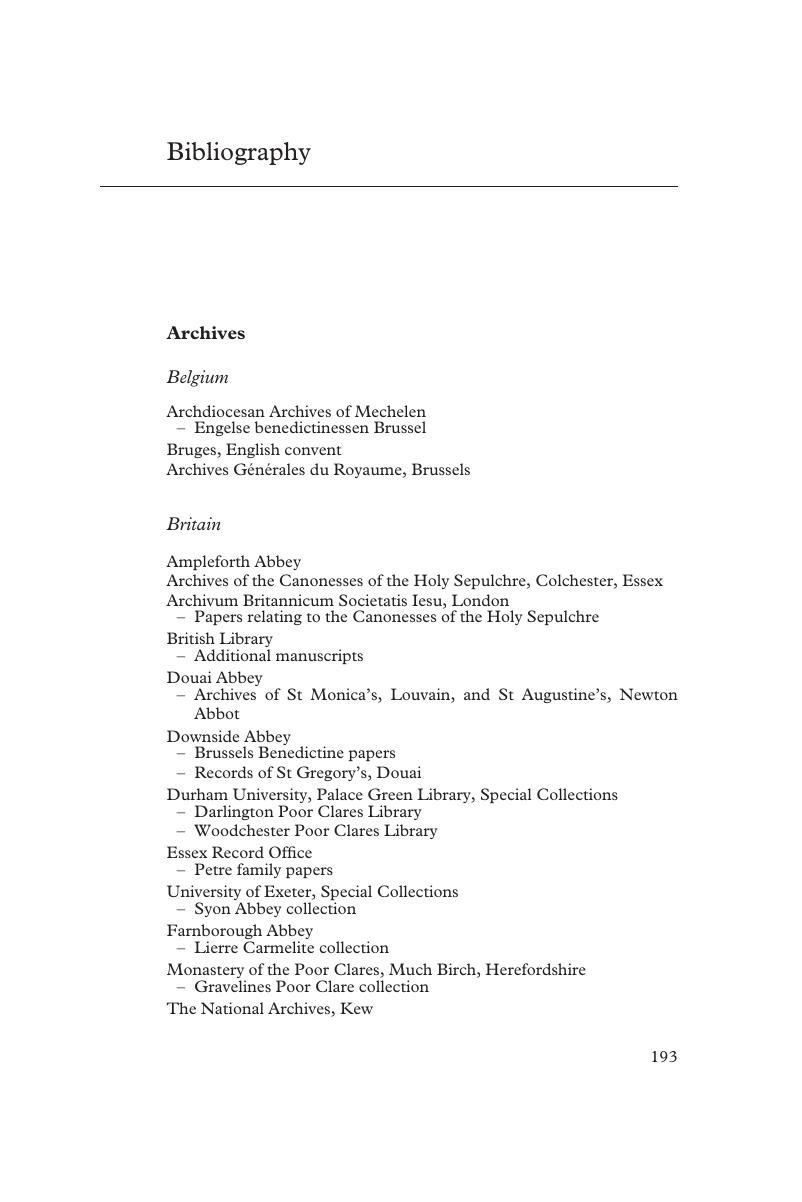Book contents
- English Convents in Catholic Europe, c. 1600–1800
- English Convents in Catholic Europe, c. 1600–1800
- Copyright page
- Contents
- Figures and Tables
- Acknowledgements
- Introduction
- 1 Recruitment: Familial and Clerical Patronage
- 2 Embracing Enclosure
- 3 Material Religious Culture
- 4 Financing the Conventual Movement
- 5 Liturgical Life: Relics and Martyrdom
- 6 Networked: The Convents and the World of Catholic Exile
- Conclusion
- Bibliography
- Index
- References
Bibliography
Published online by Cambridge University Press: 20 December 2019
- English Convents in Catholic Europe, c. 1600–1800
- English Convents in Catholic Europe, c. 1600–1800
- Copyright page
- Contents
- Figures and Tables
- Acknowledgements
- Introduction
- 1 Recruitment: Familial and Clerical Patronage
- 2 Embracing Enclosure
- 3 Material Religious Culture
- 4 Financing the Conventual Movement
- 5 Liturgical Life: Relics and Martyrdom
- 6 Networked: The Convents and the World of Catholic Exile
- Conclusion
- Bibliography
- Index
- References
Summary

- Type
- Chapter
- Information
- English Convents in Catholic Europe, c.1600–1800 , pp. 193 - 213Publisher: Cambridge University PressPrint publication year: 2020



